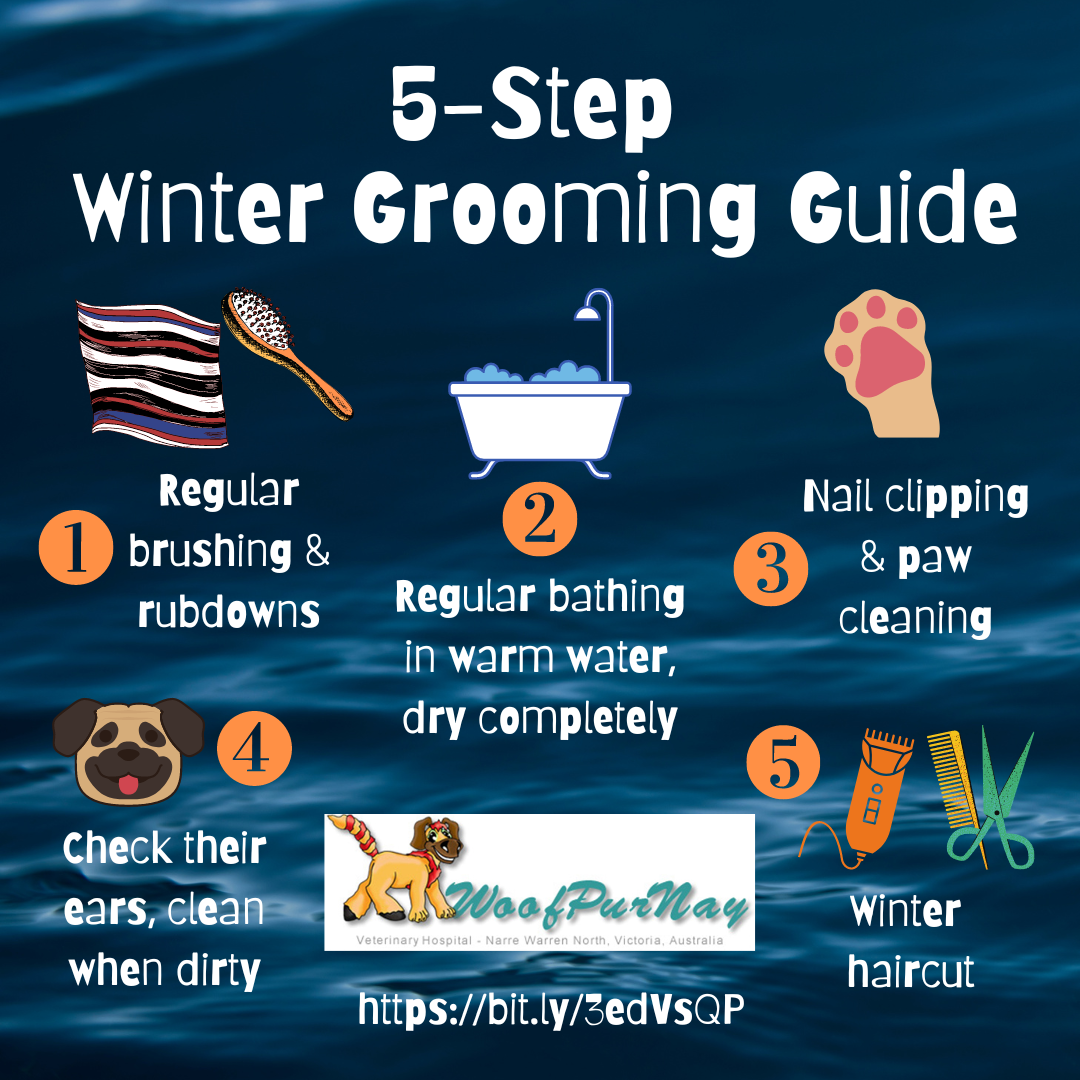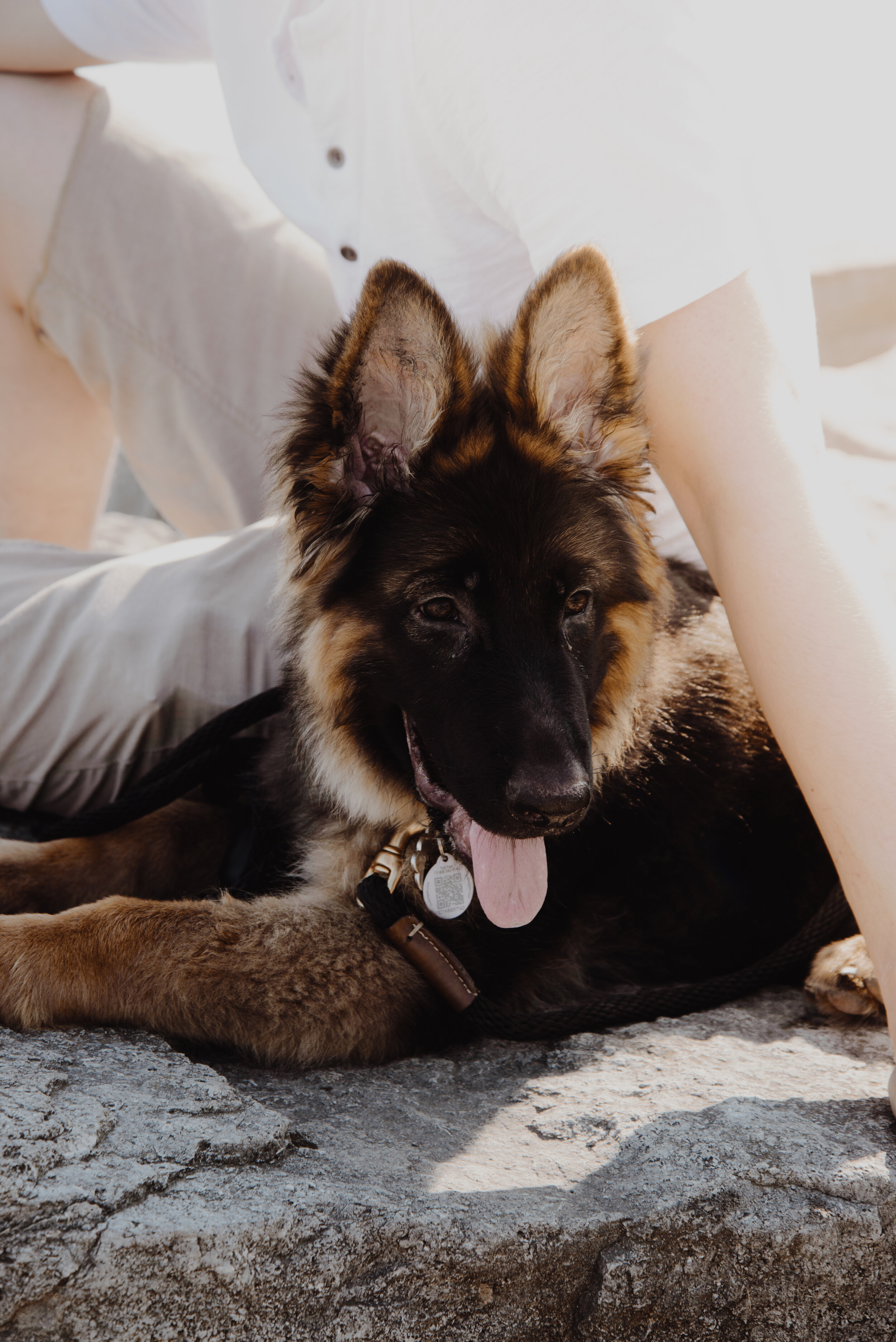You may think that grooming is only for the warmer months, however the cooler temperatures, wet windy weather, dry indoor heating conditions and thick winter coats make it just as important to keep on top of your pets grooming needs at this time of the year. To make it easy, we have come up with a 5-Step Winter Grooming Guide to ensure your pet stays comfortable, healthy and in top shape this winter.
Step 1. Brushing your pets coat
Regular brushing at home helps to keep your pet’s coat in great condition by removing loose hair and preventing the formation of knots and hairballs. This is particularly important during winter with naturally thicker coats that need to be kept neat for their insulation to work at its best and for your pet’s overall comfort.
Check for any issues: grooming your pet is a great opportunity to check for fleas, ear mites, cuts, lumps and bumps. A winter coat is great at hiding these nasties so give your pet a good look over whilst grooming them.
Regular rub-downs: anytime your pet is wet, whether it is from splashing in a puddle or running in the rain make sure you dry them thoroughly. Your pet is just as susceptible to winter chills as you are.
Step 2. Washing your dog in winter
Regular bathing: dogs sometimes need more bathing in winter as their thick winter coats tend to matt and walks through mud and puddles are messy. It is important to continue with your dog’s regular bath-time schedule to keep unwanted odours, dirt and loose hair under control.
Keep them warm: be mindful of the cold weather when bathing your dog. Wash them during the warmest part of the day, use warm water and make sure you dry your pet off completely after the bath so they don’t get a chill. If you don’t have the facilities at home to wash in warm water, consider taking your pooch to a DIY dog wash, like ours at Woofpurnay Veterinary Hospital.
Dry, sensitive skin: during the cold winter months, the combination of cold air, wind and heating can result in dry, flaky skin. Even though they are covered with fur, pets can also feel the drying effects of winter. There is a wide range of gentle and sensitive dog shampoos and conditioners you can use that will moisturise and help soothe your dog’s coat and skin while washing.
Step 3. Nail & paw trimming
Clip those nails: As the weather gets cooler, we tend to go out less so dogs aren’t playing or walking on concrete as much as they normally would. This means their nails aren’t naturally wearing down so need to be checked and trimmed regularly. Check out our guide on trimming your dogs nails. Or if you are not comfortable trimming your pets nails book them in with our groomer or have one of our vets show you how to do it at your next check-up.
Trim their paws: it is important to trim the fur between your dog’s paws as the excess fur can become matted and hold dirt and moisture from rain and puddles, causing discomfort.
Paw cleaning: you can minimise problems such as cracked pads, irritations and infections from mud, rain, gravel etc. by simply wiping your pets paws after each outing. Keep a towel handy by the door and make feet wiping part of your regular routine.
Step 4. Cleaning your dogs ears
Check their ears: regular ear examinations are important year round to help identify any problems before they become serious and ensure they stay healthy. A clean healthy ear looks pink, odourless and free from dirt.
Clean ears only when dirty: if your dog’s ears look dirty or they are shaking their head more frequently its time for a clean. Follow our simple 3-step guide on how to clean your dog’s ears.
Speak with your vet: if your dog’s ear looks red or inflamed, smells abnormal, you notice a discharge coming from their ear or your dog appears to be in pain, contact your local vet. These symptoms can be an indication of an ear infection, ear mites or allergies that require medical attention. Cleaning an infected ear can do more harm than good.
Step 5. Trimming your dogs coat in winter
Winter haircut: dogs naturally grow a thicker coat to help them combat the cold in winter. Many owners want to keep their dog’s coat untrimmed throughout the winter season to keep them warm, however as the cold weather stimulates hair growth, regular trimming is still important to keep their coat in top shape. You can always opt for a slightly longer length if you are worried about their warmth.
Added extras: most groomers also offer extra grooming services such as nail trims, ear checks and cleaning, hydro bath, blow dry and also check for issues such as lumps and bumps as part of each grooming session. So if you visit a groomer it is worth checking with them first about your pet’s home grooming needs.
Winter accessories: many pets spend their winters snuggled up in the comfort and warmth of their home, so they don’t rely on their long fur and thick undercoat for warmth like wild animals do. Whether your pet has just had a trim, or is a thin, older or shorthaired breed, accessorising your pet with a winter coat for walks and outdoor time can provide much needed warmth. Make sure the coat is the right fit and doesn’t limit their movement or breathing and remember to take it off once they are in a warm, heated environment. For more ideas on keeping your pet warm this winter click here.







